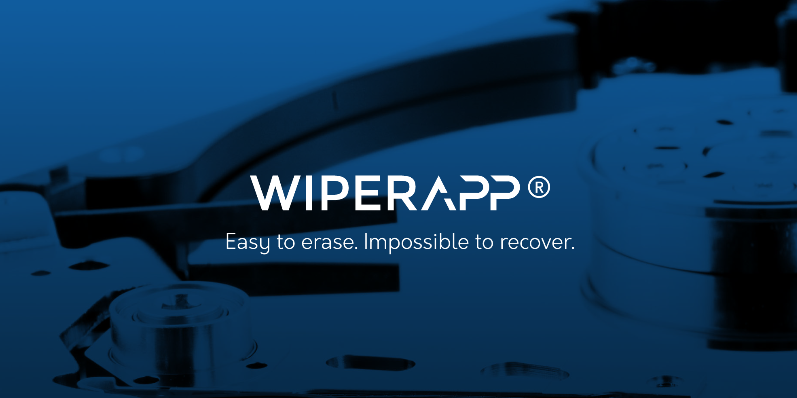
Data Erasure in Legacy Systems: Navigating Challenges and Implementing Effective Solutions
Introduction:
In the fast-paced world of technology, organizations often find themselves grappling with the challenge of securely erasing data from legacy systems. Legacy systems, while robust and reliable, can pose unique challenges when it comes to implementing data erasure practices. In this article, we will explore the intricacies of data erasure in legacy systems, understand the challenges involved, and delve into effective solutions to ensure comprehensive data security.
Understanding Legacy Systems:
Legacy systems, characterized by their longevity and continued use, play a pivotal role in various industries. These systems, often built on outdated technologies, may still be integral to critical business processes. However, as organizations evolve and upgrade their IT infrastructure, the need to retire or repurpose these legacy systems arises. This transition brings forth the challenge of securely erasing sensitive data stored within these aging technologies.
Challenges in Data Erasure for Legacy Systems:
1. Outdated Data Storage Formats: Legacy systems often use outdated data storage formats that may not align with modern data erasure methods. Magnetic tapes, floppy disks, and obsolete hard drives can pose challenges in implementing secure data erasure practices, as these mediums may not support the advanced techniques employed by contemporary data erasure solutions.
2. Compatibility Issues: Data erasure tools and software are typically designed for modern operating systems. Compatibility issues arise when attempting to integrate these tools with legacy systems, making it difficult to execute reliable and comprehensive data erasure processes.
3. Lack of Documentation: Legacy systems, having been in use for extended periods, may lack comprehensive documentation. This absence of detailed records about the data stored, its location, and associated dependencies complicates the data erasure process. Without a clear understanding of the data landscape, organizations face difficulties in executing precise and effective erasure procedures.
4. Limited Support and Vendor Obsolescence: As technology advances, vendors may discontinue support for legacy hardware and software. This leads to a scarcity of updates and patches, leaving organizations vulnerable to security threats. The absence of ongoing support hampers the implementation of robust data erasure solutions, as these systems may not be equipped to run the latest security protocols.
Solutions to Overcome Data Erasure Challenges in Legacy Systems:
1. Customized Data Erasure Solutions: Recognizing the unique nature of legacy systems, organizations can opt for customized data erasure solutions tailored to their specific requirements. These solutions should be designed to work seamlessly with older technologies, accommodating the limitations of legacy hardware and ensuring the secure erasure of data stored in outdated formats.
2. Data Classification and Prioritization: Given the lack of detailed documentation in legacy systems, organizations should conduct thorough data classification exercises. Identifying sensitive data and prioritizing its erasure ensures that critical information is securely removed, minimizing the risk of data breaches. A well-defined data classification strategy aids in targeting erasure efforts where they are needed most.
3. Isolation and Testing Environments: Creating isolated testing environments that mirror the legacy systems allows organizations to assess the effectiveness of data erasure processes without jeopardizing operational data. Testing ensures that the chosen erasure methods work seamlessly with the legacy infrastructure, addressing compatibility issues and reducing the risk of unintended consequences.
4. Secure Data Disposal Protocols: Implementing secure disposal protocols ensures that decommissioned hardware is handled responsibly. Legacy systems may involve unique disposal requirements, such as physical destruction of storage media. Organizations should adhere to recognized standards and guidelines for secure disposal to prevent data leakage and environmental hazards associated with electronic waste.
5. Collaboration with Data Erasure Experts: Engaging with data erasure experts who specialize in legacy systems can be instrumental in overcoming challenges. These experts possess the knowledge and experience to navigate the intricacies of outdated technologies, offering valuable insights and guidance throughout the data erasure process.
6. Documentation and Record Keeping: Establishing comprehensive documentation practices is crucial for effective data erasure in legacy systems. Maintaining detailed records of data storage locations, formats, and erasure procedures facilitates a smoother transition during system decommissioning. This documentation also serves as a reference for compliance audits and regulatory requirements.
7. Data Backup and Restoration Plans: Before initiating data erasure in legacy systems, organizations should develop robust data backup and restoration plans. This precautionary measure ensures that critical information is preserved in case of unforeseen issues during the erasure process. Regularly testing backup and restoration procedures adds an extra layer of security.
Conclusion:
Data erasure in legacy systems demands a strategic and nuanced approach to overcome the unique challenges posed by aging technologies. As organizations continue to modernize their IT infrastructure, addressing the secure decommissioning of legacy systems becomes paramount. By implementing customized solutions, conducting thorough data classification, and collaborating with experts, organizations can navigate the complexities of legacy system data erasure with confidence. Adopting these strategies not only mitigates security risks but also ensures a smooth transition to advanced technologies, laying the foundation for a secure and resilient digital future.